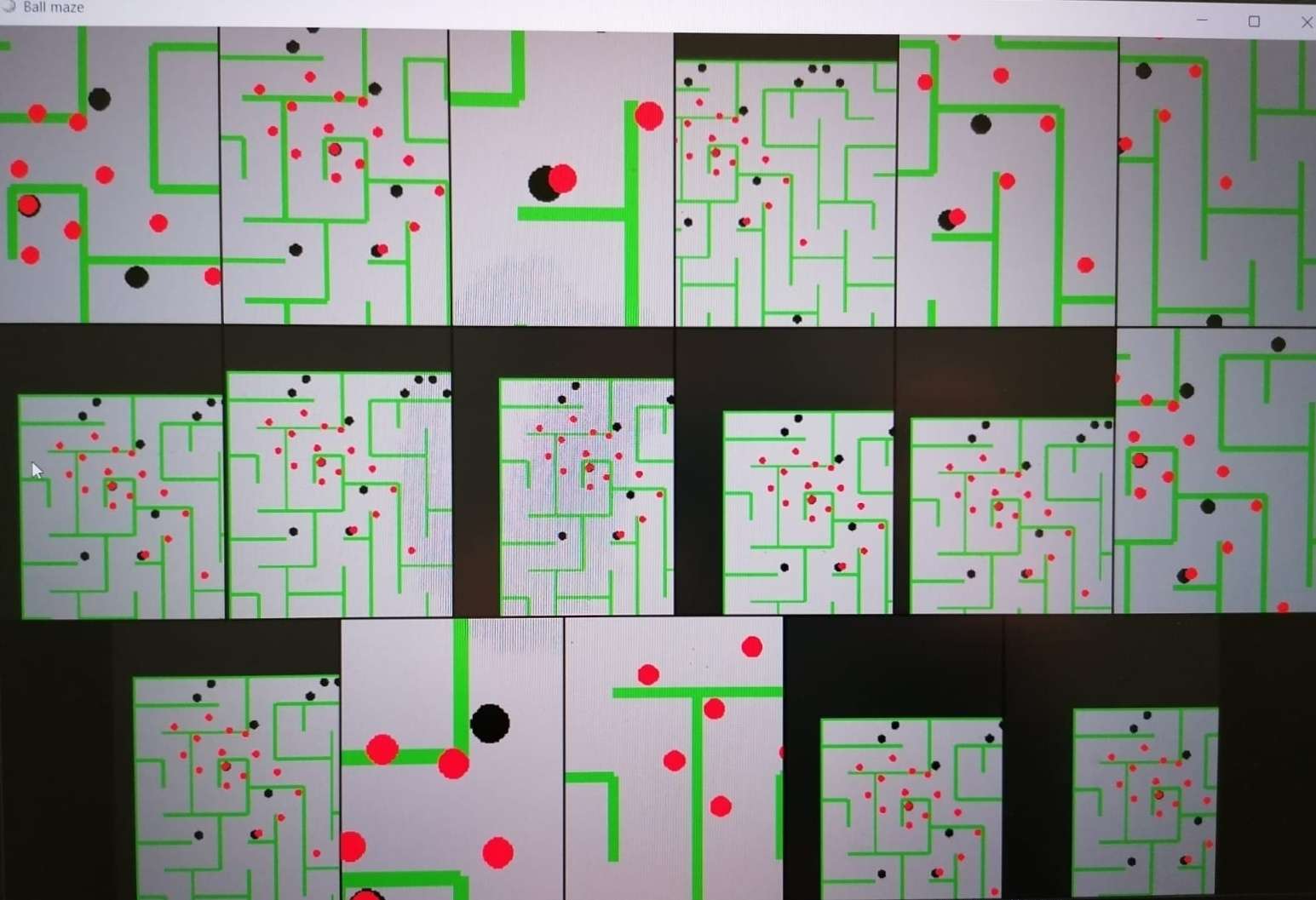Introduction
One of the subjects I had in Fachhochschule Vorarlberg was called Raspberry Pi, where we needed to make a group project involving some ESP32 chips and, you guessed it, a Raspberry Pi. The chips contain all sorts of sensors, like temperature, humidity, light and tilt, so there were a lot of possibilities when choosing what you were going to make. After thinking for a while, we decided to make a game where each player controlled a ball by tilting one of these chips around in a large maze. The first player to then get their ball to the bottom-right corner would win the game. In a sense, you could view the chips as being the controllers for each player and the Raspberry Pi as the main server handling the game logic. I go more into depth on how it works here.
Anyways, what you have to know is that we started the project all the way back in October, but it took a lot of time to get going initially. First, we had to figure out how to read the tilt sensor from the ESP32 chips and we also needed to figure out how to make the networking work. That meant that by the middle of November, we still had a lot of work to finish.
In comes the perfect opportunity: as it turns out, the Austrian Student's Association (ÖH) was organising a hackathon where you could work on a project, whether new or already existing. It was the ideal occasion to develop the game quickly and to try presenting our work for the first time.
The kickoff
The hackathon took place between the 15th and 17th of November at the main campus building of FHV, not far from my dorm at the time. After registering at the desk, we received a couple of gifts, like a pack of mints, a sweater of ÖH and some Post-it notes. We kicked off the event with a short practical info session in one of the classrooms and then we were off, ready to start the grind.
Only one of my teammates was available to go to the hackathon, so we found a free spot in the main hall at one of the tables and started working. She worked on some of the C code to make it so the ESP chips could send packet data to the Raspberry Pi, while I worked on the networking code in Python.
It didn't take long for us to discover some of the benefits of the hackathon, however. Free soft drinks were available at any time, fresh from the fridge. And for the food? They had that covered too: on the day that the event started, we had free sandwiches for dinner, with more free food to come throughout the event.
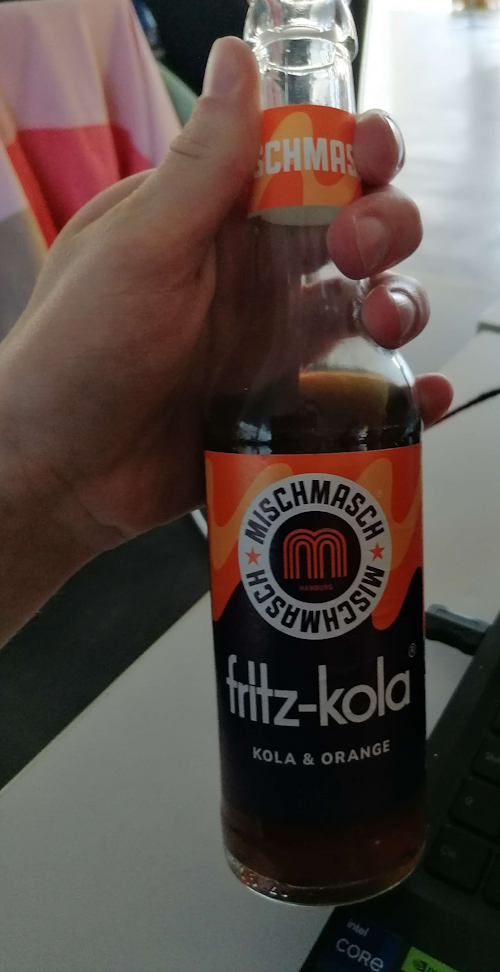
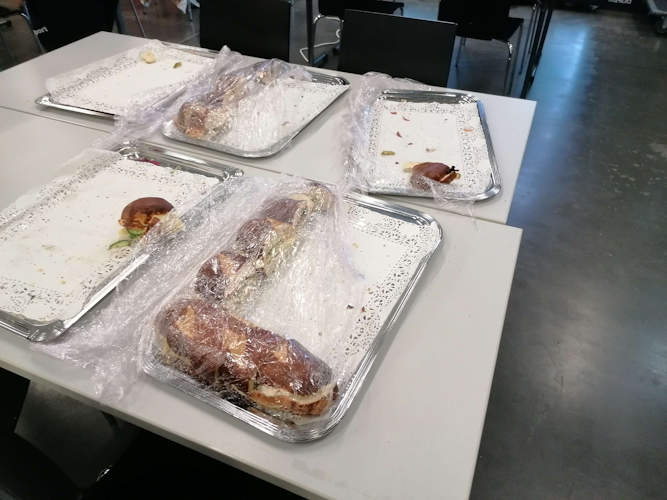
The second day
Usually, you wouldn't spend time at school on a Saturday, but this was one of the only times were it just made sense. We came together in the morning and had our breakfast at the same table we sat the day before. There was a Spar on my way to the campus, so it was easy to jump in and get something to munch on as we continued work on the project.
I got a lot done that morning, doing a bunch of refactorings and improvements to game state handling on the Raspberry Pi server as well as continuing work on creating the infrastructure needed to handle packets coming from the ESP and to send packets to the frontend.
At noon, the organisers opened a stand where you could pick up some free vegetarian rice and some small non-vegetarian burgers. I made full use of that opportunity and fueled up for the rest of the afternoon. We also got some free packaged food just in case there were any doubts that we could've been starving. A perfect package to eat from for breakfast the following day. In the evening we enjoyed some sandwiches, just as the day before.
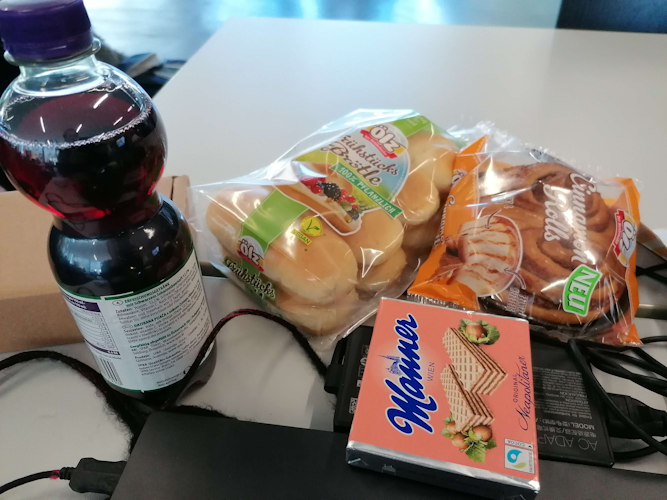
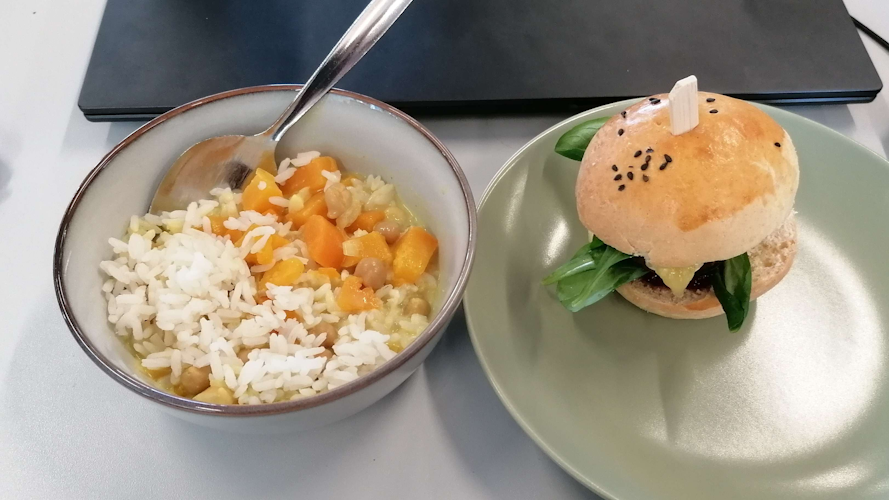
Final day and presentations
On Sunday morning, we put in the last ditch effort to get the project to be presentable. I finished the networking part in Python, making sure to handle all the needed events for the game. Unfortunately, there just wasn't enough time to work out the kinks and actually make the connection between the devices work, so we had to compromise and show the game with keyboard inputs instead of actually showing that the tilt sensor on the ESP worked. Those worries quickly faded when we saw what we got for lunch, however: free pizza for all attendees!
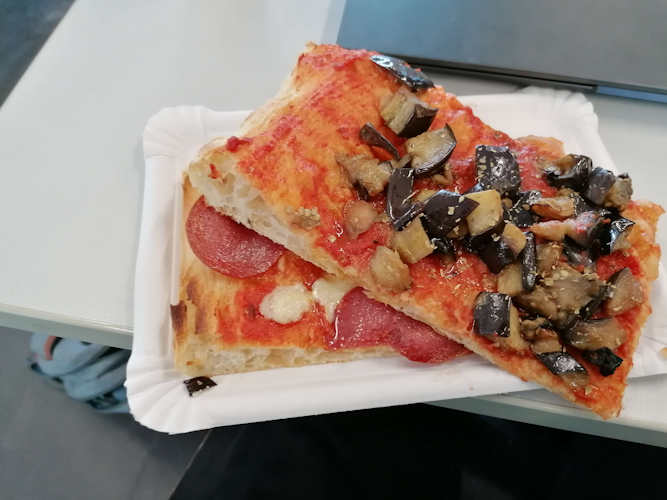
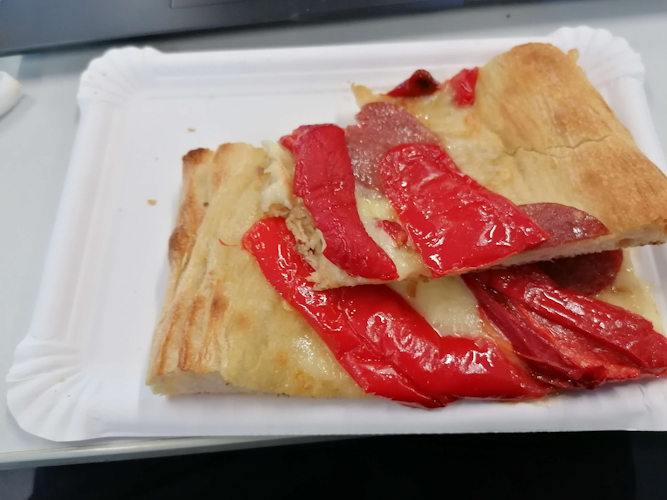
At 2 'o clock, it was time. We all went to a large auditorium where we got to listen to each group's presentations. The projects varied immensely: some created a 2d game, some 3d, some made web apps, some were about robotics and some even used AI. To give you an example: one of the groups that we also saw throughout the event learned how to work with the display protocol of an old screen, which they then created a translation layer for so they could show arbitrary images on it. Clever stuff.
Then it was our time to shine though. As the people before us were presenting on one side of the auditorium, we had some time to set up our project on the other side. The presenting desk flip flopped from one to the other, so every presenting group had time to get ready and mentally prepare.
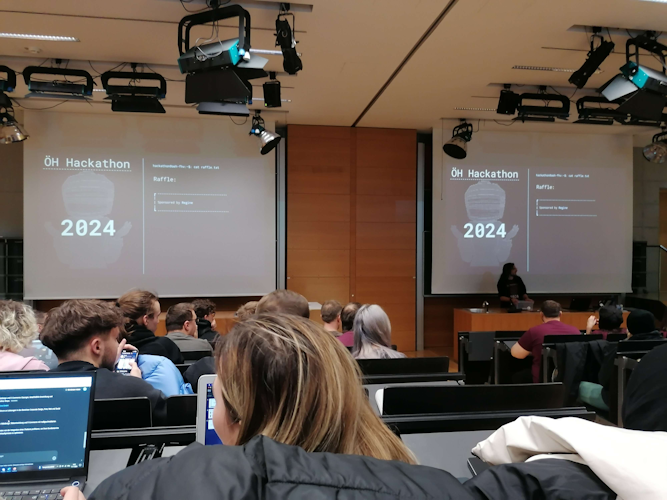
The presentation went really well and I even got complemented by the end of it by some of the people I knew from the audience. The most important thing I did was to not take it super seriously. Our project wasn't fully done and not everything worked, but you just have to kind of show what you have. Before demonstrating the game, we also mentioned that we were going to use the keyboard instead of the ESP chips, and my teammate would "fake" the movement by tilting the chip to show what it should have looked like. This way, it didn't matter if it wasn't finished. You still got the memo.
Conclusion
The ÖH hackathon was an amazing opportunity to work on a project and it was really fun to see all the different things people made with the time they spent. The free drinks and food was the cherry on top that kept us engaged throughout. I would definitely recommend anyone to try out an event like this once in a while. It's a great way to collaborate and connect with people while working on something fun.
